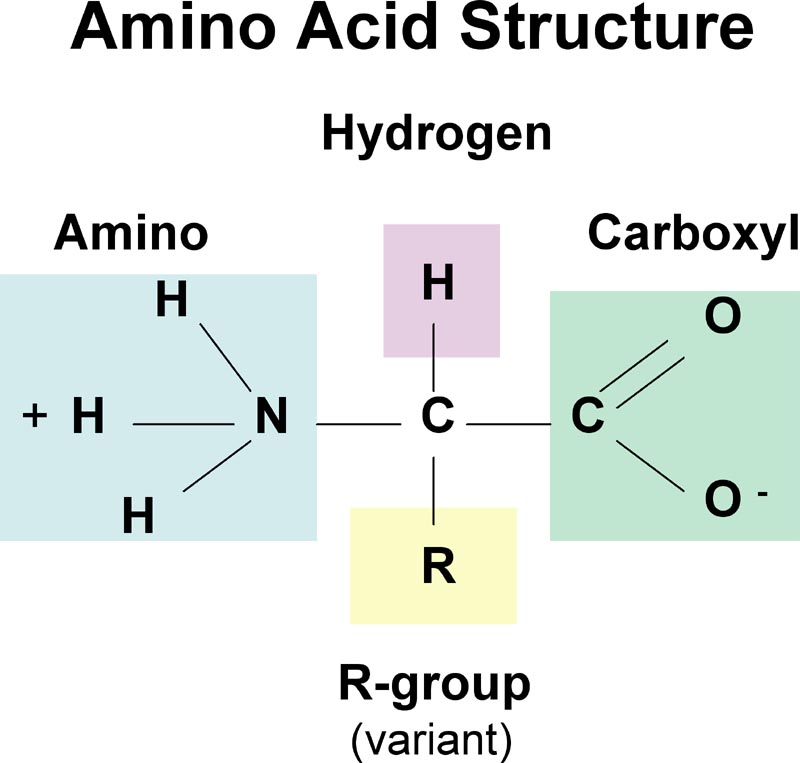The basic building blocks of proteins are amino acids. Amino acids are the monomers which form polypeptide and proteins.
Properties of Proteins:
- sensitive to pH and heat
- shape determines function
- enzymes are special group of proteins
- contain H, N, C and S
- made up of amino acids
There are about 20 essential amino acids found in proteins, and they differ in their R group.
Amino acids join together to form a polypeptide through the process called condensation.
Two amino acids are joined by a peptide bond to form a dipeptide via condensation. Water is formed as a by product.
The reaction is between an amino group and a carboxyl group.
Continued condensation leads to the addition of more amino acids and thus resulting in a polypeptide chain.
Structure of proteins:
- Primary structure --> specific linear order which amino acids join to form a polypeptide chain
- Secondary structure --> regular folding of segments by hydrogen bonds (α-helix and β-pleated sheet)
- Tertiary structure --> (only for globular proteins) overall shape of polypeptide resulting from interactions* between the R group
- Quaternary structure --> association of 2 or more polypeptide chains
*Bonds that form tertiary structures:
- hydrogen bonds
- ionic bonds
- disulfide bonds
- hydrophobic interaction
Classification of proteins (based on structure):
- Globular --> compact and spherical structure which is soluble
- Fibrous --> long polypeptide chains twisted around each other, forming long fibres that provide tensile strength, insoluble
